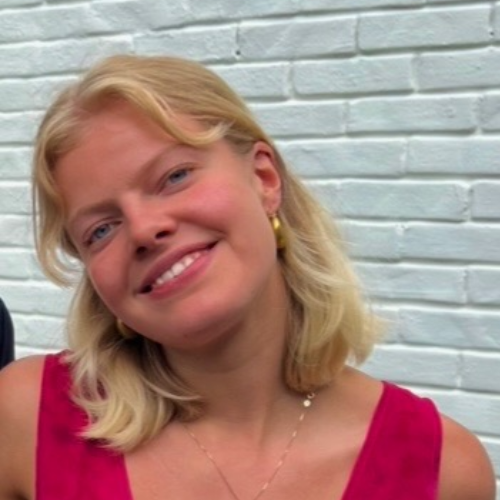

Tiril Steiro Eide is a Norwegian student from the University of Bergen. She is undertaking a Bachelors in Gender Studies. Her tutor, Kari Jegerstedt, encouraged her to participate in the Virtual Exchange on Queer Theory with Jon Braddy’s Florida students and which we’ve been discussing during the past couple of weeks.
Tiril says Kari is such a passionate tutor that she couldn’t say no! Not only that, but she also wanted to show solidarity with the situation in Florida where the Queer community was experiencing restrictions at this time. Tiril says she thinks it’s important to take the theory part of a course such as this, out into the real world and make it part of an active strategy. As a result of this thought process, she wanted to have an opportunity to ‘marry’ theory and activism and take it beyond the walls of academia.
Different climates
“It’s not the same climate at all here in Norway’, explains Tiril when talking about the queer community and their situation. ‘And we quickly realised this as soon as we met them online. I wanted to contribute to the course and I wanted to hear their views and experiences.”
Before beginning the virtual exchange, Tiril felt interested in how everyday life was for the American students. “I couldn’t picture how it would be, also as I’ve never experienced a virtual exchange before. I felt nervous about communicating with them at the start.
“Also, from my experience,’ she continues, ‘Americans are often more extroverted, whereas we are more shy and reserved here in Norway. This was something I wondered about.
“Sure enough, when we met them this was true’, she laughs, ‘the meeting sort of confirmed the stereotypes I had assumed before. As soon as we turned on the screens, we were met by these extremely loud and extroverted American students, eager to speak and tell us everything! They had lots of personal stuff to share.”
Different disciplines in the virtual exchange
The most noticeable difference Tiril says, was that the American students weren’t gender students, but communication students, whereas her cohort were gender theory students.
“We are used having a lot of reading to do. And we use the text as a spring board for our discussions. During lectures, we really reflect hard as to whether to raise our hand and contribute. Therefore, we think about what we want to say deeply before deciding to intervene.
“The Americans just shared their thoughts much more readily, and said what they were thinking. They didn’t stick to basing their thoughts on texts, but just interjected as they felt.
“This was really confronting for us.”
The learning during the VE
Tiril says they had a lot to learn during the virtual exchange experience.
“You have to contribute in a VE and not just sit there and say nothing. We learned a lot from this experience and it is something we talked about among ourselves. We decided we needed to be a bit tougher. It was such a big contrast. In small groups we were so reluctant to speak out compared with them as they would speak and share everything. We questioned this. We knew we needed to give them something too. We needed to speak up regardless so we could collaborate together.
“This was challenging for us. Along with language as non-native speakers.”
A personal virtual exchange journey
Tiril says personally she thought the US students were making a statement by just taking the course, whereas for them, the virtual exchange was an integral part of another course.
“l learned the importance of saying what I thought. I understood I needed to do this. The literature wasn’t the most important aspect of the collaboration. I had to share my opinion and my thoughts if the course was to have a meaning for me. It needed to be a collaboration.
“I changed my thinking and it was quite a lightbulb moment to realise this. I learned I needed to let myself go a bit and not worry so much.“
Along with letting herself go, Tiril also decided to let go of the texts too. This was no easy task, as she was not used to this way of studying.
“I tend to stick to the text and not deviate too much.”
New perspectives in the VE and takeaways
“There was a lot of personal stuff that was shared, says Tiril, ‘and I didn’t expect this. I thought a lot about this as it was so different way to understand the course.
“I realised that for Queer Theory, activism and theory go hand-in-hand otherwise what is the point? I reflected a lot on this.
“I would definitely do it again and I know now that activism is important for academia and gender studies. This is something I was sceptical about, but after a lot of discussion and even writing about it, I confronted myself and decided it was important for how we understand ourselves, each other and the society we live in.
“We have to take it outside the walls of the institution beyond the walls of academia.
“My other takeaway is also the need to take my place and to speak out. You have to contribute and say what you think.
“I didn’t always do this. And I regret that. Take your place and speak out. That’s why we’re here.
“I learned a lot from them about this.”
Advice to others before taking a Virtual Exchange
Tiril says, “Take your place and participate from the start and know that you are contributing to something important. Understand how important your voice. Even if a lot of the readings were from an American perspective, we can’t lose sight of the fact that Norwegians also have something to say about this.
We need to speak out and we need to appreciate the different perspectives. Share your thoughts and value your opinions.”
